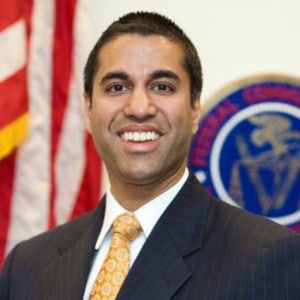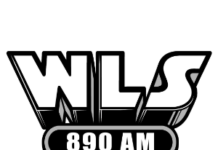
Yesterday, while being taunted by Democratic Lawmakers on Capitol Hill for not responding stern enough to President Trump’s tweets, FCC Chairman Ajit Pai said an NPRM will be considered at the Commission’s November meeting that would bring major changes to broadcast ownership rules. One of those changes is the elimination of the Radio/Television Cross-Ownership rule. For more detail on what all of this means to you, we turned to one of our experts on these subject, Broadcast Attorney John Garziglia.
(by John Garziglia) Radio, always a step-child in television and newspaper ownership discussions, may be significantly impacted by the FCC’s intention to eliminate two longstanding cross-ownership rules.
The FCC’s newspaper/broadcast cross ownership rule, Section 73.3555(d) of the Commission’s rules, prohibits with some exceptions the combined ownership of a radio station and a daily newspaper in the same market. The FCC’s radio-television cross ownership rule, Section 73.3555(c) of the Commission’s rules, prohibits with several large market exceptions the combined ownership of radio stations and television stations in the same market.
Chairman Pai stated yesterday that the elimination of both rules will be on the November 16th FCC meeting agenda. A draft of the FCC order contemplating the elimination of the rules is scheduled to be released today.
So, for radio, will 2018 be the year of newspaper and television acquisitions? Will radio broadcasters be able to take advantage of a newfound regulatory ability to own daily newspapers and television stations in their markets, or conversely will they be taken advantage of?
One of the more memorable quotes from a radio broadcaster who got involved with LPTV years ago was that “TV is not radio with pictures”. This prescient observation likely still holds true. It will be interesting to see just what synergies there are today between newspaper, television, and radio, and whether new combinations of print, video and audio will make the separate fragments together more successful.
The significant marketplace change for radio that will occur as a result of the elimination of the cross-ownership rules will be that, without regard to market size, a local radio station owner will be able to purchase the daily newspaper and television station, or the local daily newspaper and/or television station will be able to purchase the local radio stations. Or if neither happens, the local radio station owner may watch as the daily newspaper and television station combines with his or her radio competitors.
We may be on the road to all FCC radio and television ownership rules being eliminated. It is almost impossible as a legal matter in today’s multifaceted media universe to justify the current FCC ownership restraints on either radio or television.
The FCC’s broadcast station ownership rules contain many anomalies that, when challenged in court, are unlikely to pass scrutiny. For radio, one of the perverse anomalies is the different ownership cap that results when radio ownership restrictions are imposed upon small Nielsen market broadcasters who are often limited to the ownership of five or fewer radio stations, compared with similar unrated market owners that are analyzed using contour overlap methodology which may allow for the ownership of up to eight radio stations.
Another anomaly is the unlimited national ownership reach allowed for radio ownership, while television ownership is curbed at a national 39% audience reach restriction (without taking into account the contested interpretation of the UHF discount). A justification of the AM and FM sub-caps is equally problematic.
Once the draft ownership order is released, it will be indicative for future relaxations if the FCC engages in nuanced justifications for its cross-ownership rules elimination, or whether it believes it sufficient to essentially label the current rules as “outdated”. If the FCC’s central justification for the elimination of the cross-ownership restrictions is the seniority of current rules, that justification may indicate that most broadcast station ownership rules will sooner or later fall under this administration.
When the purging of the cross-ownership rules is challenged in court as it almost certainly will be, it may be easier for the FCC to simply argue for wholesale rule elimination rather than proffering nebulous evidence for a lesser approach. Thus, Chairman Pai may be, in the elimination of, rather than the modification of, the cross-ownership rules, taking the path of least resistance.
 John F. Garziglia is a Communications Law Attorney with Womble Carlyle Sandridge & Rice in Washington, DC and can be reached at (202) 857-4455. or[email protected]
John F. Garziglia is a Communications Law Attorney with Womble Carlyle Sandridge & Rice in Washington, DC and can be reached at (202) 857-4455. or[email protected]






As much as lawyers, brokers, and large broadcast companies yearn for the elimination of sub-caps I doubt that Chairman Pai will give that serious consideration. The Chairman is heavily invested in AM revitalization. Eliminating the sub-caps will hasten the demise of the AM band.